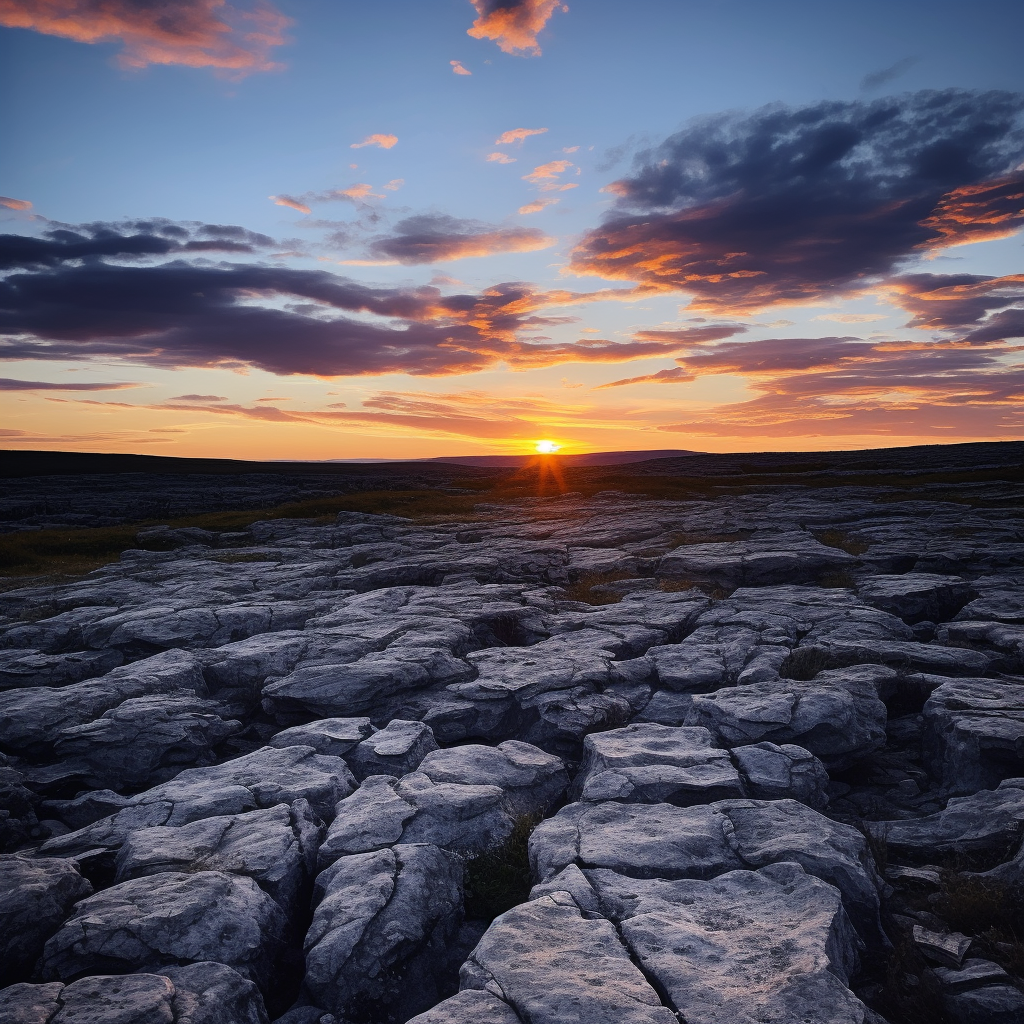Not everyone found it fascinating. Some saw it as little more than a barren, rocky wilderness. "There is not water enough to drown a man, wood enough to hang one, nor earth enough to bury him" said English Lieutenant General Edmund Ludlow, sometime after his visit there in 1651.
Many visitors, though, are delighted by it. Naturalists, botanists, archaeologists, historians and thousands of others who frequently come here have many different reasons for seeing it as a "fascinating and awesome stretch of land". Where is this place? Why does it appeal to so many people.
'A PLACE OF ROCKS'
It is situated at the very edge of Europe - on the west coast of Ireland, between the world-famous Cliffs of Moher to the south and Galway to the north. It is called 'The Burren'. The name stems from the Irish word boireann, which means "a place of rocks."
Rock dominates the landscape. In many places huge pavements of grey limestone dotted with massive boulders stretch as far as the eye can see. The whole Burren area, in fact, is a vast limestone deposit that covers some 1,300 sq km.
Wind and rain have sculpted the limestone pavements or slabs, known as clints, into many shapes giving the Barren a dramatic, stark beauty all it own. The people who settled here thousands of years ago were interested in the Burren's remarkable ability to provide year-round grazing for their cattle.
The large expanse of limestone - over 900 m deep in places - acts "as a huge storage heater, soaking up warmth in summer and slowly emitting it in winter." With the moderating influence of the ocean temperatures, this created a very attractive farming environment for those early settlers.
Those early farmers, left their mark all over the Burren landscape. There are dozens of megalithic tombs. One of the most famous of these is the Poulnabrone dolmen. What we see today, is only the bare skeleton of the original tomb - just the huge limestone slabs that the ancient builders used to construct this memorial to the "special dead".
Long before the Celts arrived in Ireland, inhabitants of the Burren left evidence of their presence in the form of stone burial places that are called wedge tombs because of their particular wedge shape. In 1934, at a place called Glenensheen, a young man found a gold collar - now seen as "one of the finest achievements of Irish Later Bronze Age goldsmiths"
Great mystery surrounds these ancient people. What was the purpose of their buildings, such as those exposed on the summit of Turlough Hill? Was it a sacred place for some special religious rituals?
Even underground, the Burren is a fascinating place. Water has penetrated deep into the porous limestone deposits to produce "one of Ireland's most remarkable underworlds". The limestone is honeycombed with caves. Many of these caves are still active, that is they still have streams, rivers, and waterfalls flowing in them. In one cave, called 'Poll an lonain' it is said to be Europes' longest free-hanging stalactite over 9 m long. The Aillwee Cave, is the only cave open to the public. It is an amazing cave which houses the traces of an animal that has been extinct in Ireland for more than a thousand years - the brown bear.
Botanical Burren:-
There is remarkable plant life. Rare and spectacular plants occur in an abundance. More than 20 species of orchids thrive throughout the Burren. An abundance of wild thyme and many others. It is truly a 'botanical metropolis'.
Perhaps the Burren is rocky but it is no barren wilderness. Come to Ireland and see the fascinating Burren!
